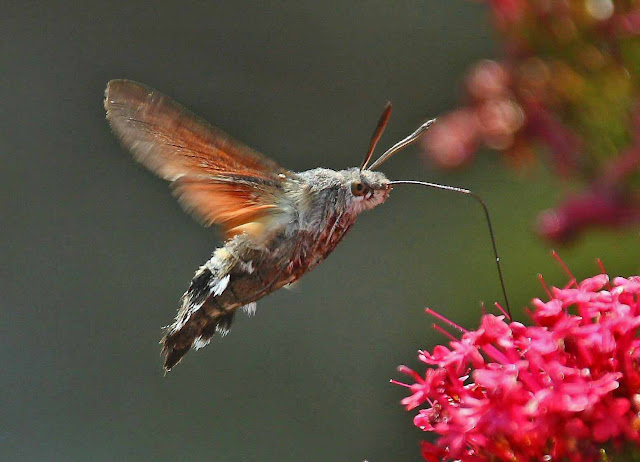The hummingbird hawk-moth (Macroglossum stellatarum) is a species of Sphingidae. Its long proboscis and its hovering behaviour, accompanied by an audible humming noise, make it look remarkably like a hummingbird while feeding on flowers. It should not be confused with the moths called hummingbird moths in North America, genus Hemaris, members of the same family and with similar appearance and behavior. The resemblance to hummingbirds is an example of convergent evolution. It flies during the day, especially in bright sunshine, but also at dusk, dawn, and even in the rain, which is unusual for even diurnal hawkmoths. Its visual abilities have been much studied, and it has been shown to have a relatively good ability to learn colours.
The hummingbird hawk-moth is distributed throughout the northern Old World from Portugal to Japan, but is resident only in warmer climates (southern Europe, North Africa, and points east). It is a strong flier, dispersing widely and can be found virtually anywhere in the hemisphere in the summer. However it rarely survives the winter in northern latitudes (e.g. north of the Alps in Europe, north of the Caucasus in Russia). They have been spotted in Newfoundland, Canada and Malaysia as well.
Moths in the Hemaris genus of the family Sphingidae are known as "hummingbird moths" in the US, and "bee moths" in Europe, which sometimes causes confusion between this species and the North American genus.
Image Credit & Copyright: Malcolm Randle
Explanation from: https://en.wikipedia.org/wiki/Hummingbird_hawk-moth




Wonderful.
ReplyDelete